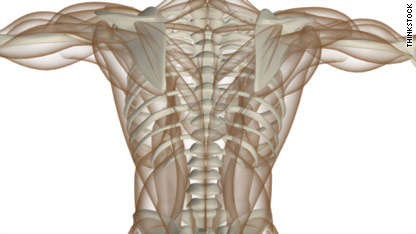 |
| Whites with muscular dystrophy |
Whites with muscular dystrophy live up to 12 years longer than their African American counterparts, according to a study published Monday in Neurology.Although medical advancements a period of 20 years increased the life span of patients with the debilitating muscle disease, those improvements haven’t been equal among different groups.White women with muscular dystrophy had a median death age of 63, versus 51 for African American women. For men, their median age at death was 33, versus 23 for African American males.
Muscular dystrophy is a group of inherited muscle diseases in which the muscle fibers are unusually susceptible to damage and progressively weaken. The condition can lead to early death due to respiratory or heart failure.Men tend to die younger, because the vast majority of patients who die have Duchenne muscular dystrophy - a particular type of the disorder that rarely affects female.
Researchers from the Centers for Disease Control and Prevention and University of Pennsylvania set out to identify trends in muscular dystrophy between 1985 to 2005 and analyzed 18,315 death certificates associated with the disease in the United States.Over this study period, both groups saw improvements in lifespan because of better lung care and other therapies, said one of the study authors, Dr. Richard Finkel.
"For white males overall, there was a 22-year increase in the age at death for whites (from about 22 to 44 years) while for blacks the increase was only about 6.6 years," said Finkel, clinical professor of Neurology at University of Pennsylvania school of medicine and director of the Neuromuscular Program at the Children's Hospital Philadelphia. "So both groups improved but not to the same extent."This racial disparity could be due to sociocultural barriers, genetic factors or other factors, but it’s impossible to pinpoint the reasons based on death certificates, Finkel said.
“There’s no way we can get beneath the surface and find out whether there are socio-economic factors that play a role,” Finkel said. “Are there genetic factors in blacks versus whites that may play a role? Are there other factors in blacks that compound the problem? This study tried to take that into account- but that’s not the entire answer.”
Another finding was that cardiomyopathy, which is weakening of the heart muscle or a change in heart muscle structure, was more often reported in black men (20.9 percent) than white men (11.8 percent).The authors cautioned in the study that “this dataset did not include information about quality of life, so increases in age at death do not necessarily equate with improvements in quality of life.”
 4:11 AM
4:11 AM
 Current Latest Health News International
Current Latest Health News International

 Posted in:
Posted in: 






0 comments:
Post a Comment